Designed for B2B organizations, Pardot is a powerful marketing platform that allows marketers to automate their activities, align marketing and sales teams and enhance the efficacy of marketing campaigns.
If enhancing your campaign results, reducing marketing expenditure, and increasing your marketing ROI are among your objectives, Pardot can help you to achieve – and exceed – your goals. To find out why it’s the right tool for you, take a look at these 10 reasons to implement Pardot now:
1. Cookies and Activity Tracking
When users visit your website or landing pages, it’s vital to be able to track their behavior. By knowing how users navigate your site and what actions they subsequently take, you can hone your online content to improve their digital experience (DX).
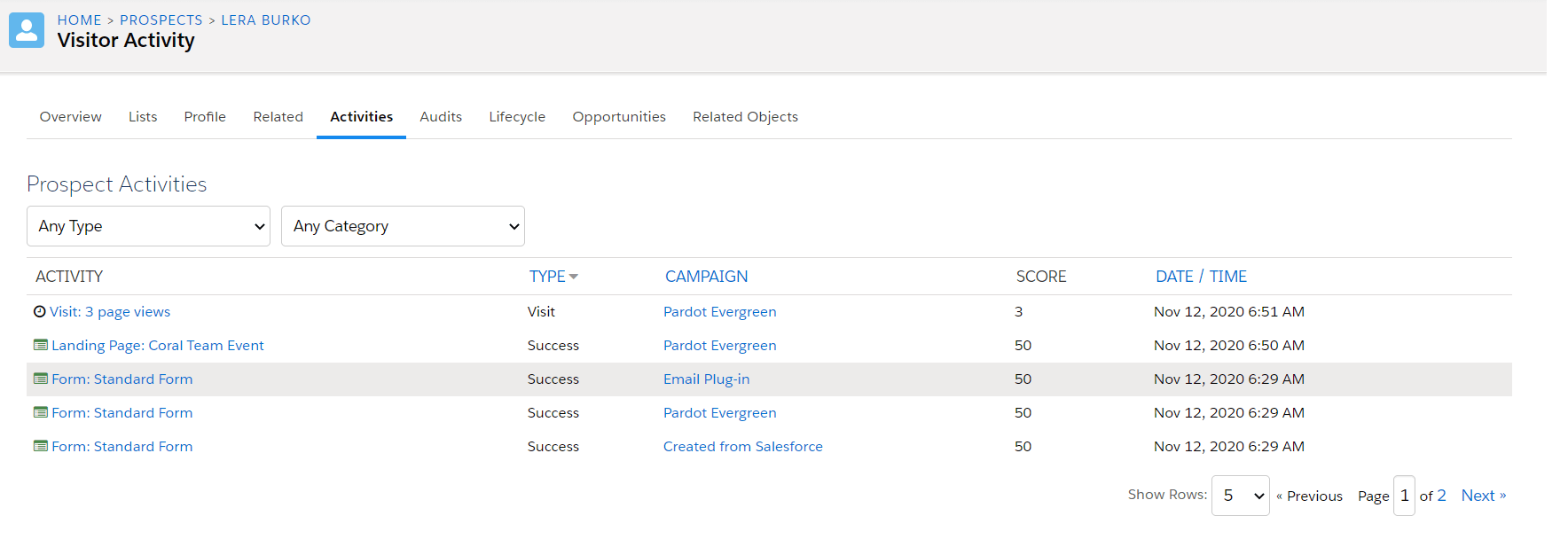
Pardot lets marketers set cookies that will gather data regarding user behavior. With information captured from cookies, you can incorporate contextual advertising into your marketing campaigns and gain a deeper insight into user actions. This not only allows you to nurture users through a designated sales funnel more easily, but it also ensures that the content they’re consuming is tailored to their needs and interests.
2. Integration with Salesforce
As part of the Salesforce family, Pardot is easily integrated into your CRM system. When used in conjunction with Salesforce, you can synchronize prospects, contacts and leads across both platforms and streamline your sales and marketing activities.
The Salesforce-Pardot Connector links the two platforms and allows you to select which data should be synced between Salesforce and Pardot. Once you’ve identified the fields you want to sync, the relevant data will be available and displayed via Page Layout.
With all the tools you need to clean, analyze and utilize your data in one place, integrating Pardot with Salesforce gives you the flexibility you need to align your sales and marketing campaigns while enriching data in Salesforce. For example, Pardot registers and transfers the information to Salesforce, such as which leads and prospects opened the last newsletter, which of them downloaded a whitepaper or a case study, who visited the website more than once, thus equipping the sales team with information on the most engaged leads and contacts. As a result, the sales team can better prioritize their actions and close deals faster.
3. Engagement Studio
A dedicated lead nurturing engine, Pardot’s Engagement Studio enables marketers to monitor, elevate and action leads as they move closer to sales. With custom, intelligent, automated programs, you can nurture leads at every stage, with minimal input from staff. A user-friendly ‘flow builder’ allows you to create bespoke customer journeys to improve your leads’ and contacts’ experience.
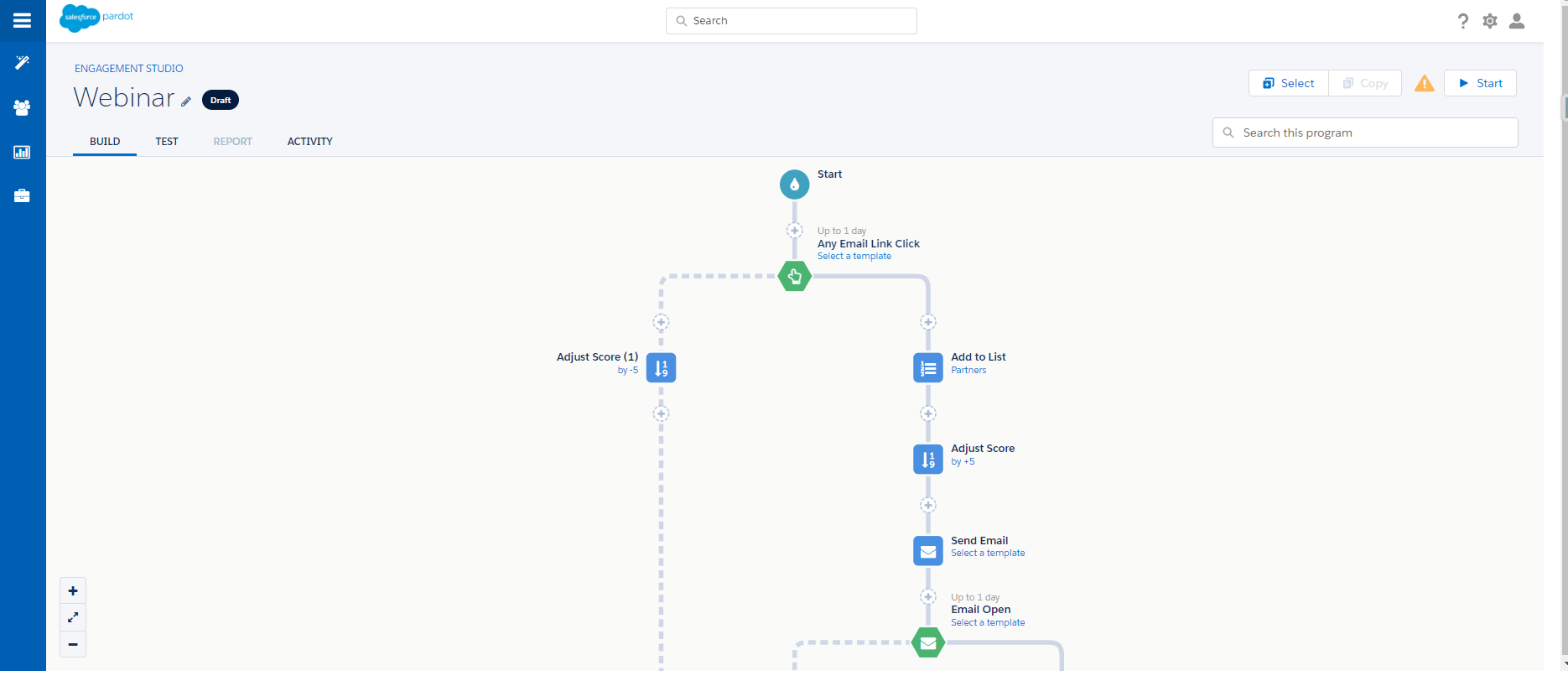
A wide range of program triggers enable you to engage users throughout their journey and to score users as they reach the next step. For example, your company hosts an event, the marketing team sends out invitations to leads and contacts stored in Salesforce. After they fill out the form in the invitation, they will later get a reminder with detailed information about the event and documents to download. If a prospect downloads the file, he or she receives 10 additional points, with the score increasing if the user subsequently visits the website by clicking on a link in the downloaded document. When the score is high enough according to your sales playbook, this prospect is assigned to the sales team for a follow up.
The easy-to-read score and associated details allow the sales team to identify the warmest leads in an instant, which tells salespeople where to direct their focus and resources. Thanks to the data collected by Pardot, the salespeople easily see what kind of follow up will be most relevant to the user and most effective for the sales.
Pardot’s Engagement Studio is extremely versatile, which ensures complete customization. From running multiple programs at once to allowing users to re-enter a program if they’ve fallen out, you can adjust the program steps, triggers and actions to provide a finely tailored user experience, and nurture leads more effectively.
4. Landing Pages
Landing pages are a useful tool that every B2B organization should be using. Each landing page is designed to achieve a specific goal, such as selling a particular product or service, capturing the user’s personal data or signing the user up to your weekly newsletter.
Filled with engaging and persuasive content, landing pages can be a valuable tool in any digital marketing campaign. Traditionally, landing pages needed to be created with code, such as HTML, which inevitably slowed the design and development process down. With Pardot, however, you can create professional landing pages with drag-and-drop tools in an instant.

The native Landing Page Builder allows marketers, project managers and business owners to create effective landing pages without any technical expertise. Since each landing page created within Pardot is hosted by the platform, you can also incorporate automation rules into the webpage, such as sending a welcome email when users submit their details via an online form.
5. Email Templates
Email marketing is a highly effective way of engaging your target audience, providing you have access to the right tools and resources. Creating a new email every time you want to reach your audience is time-consuming and a poor use of resources, particularly when you want to minimize inputs and reduce expenditure.
With purpose-built email templates, however, you can ensure that your emails are filled with insightful content that compels users to act. What’s more – it virtually guarantees that you’ll never overlook important information or critical content again and drastically reduces the time spent creating and executing campaigns.
You can create email templates in Pardot in two ways. Firstly, you can use the native editor to build custom templates, without the need for technical knowledge:
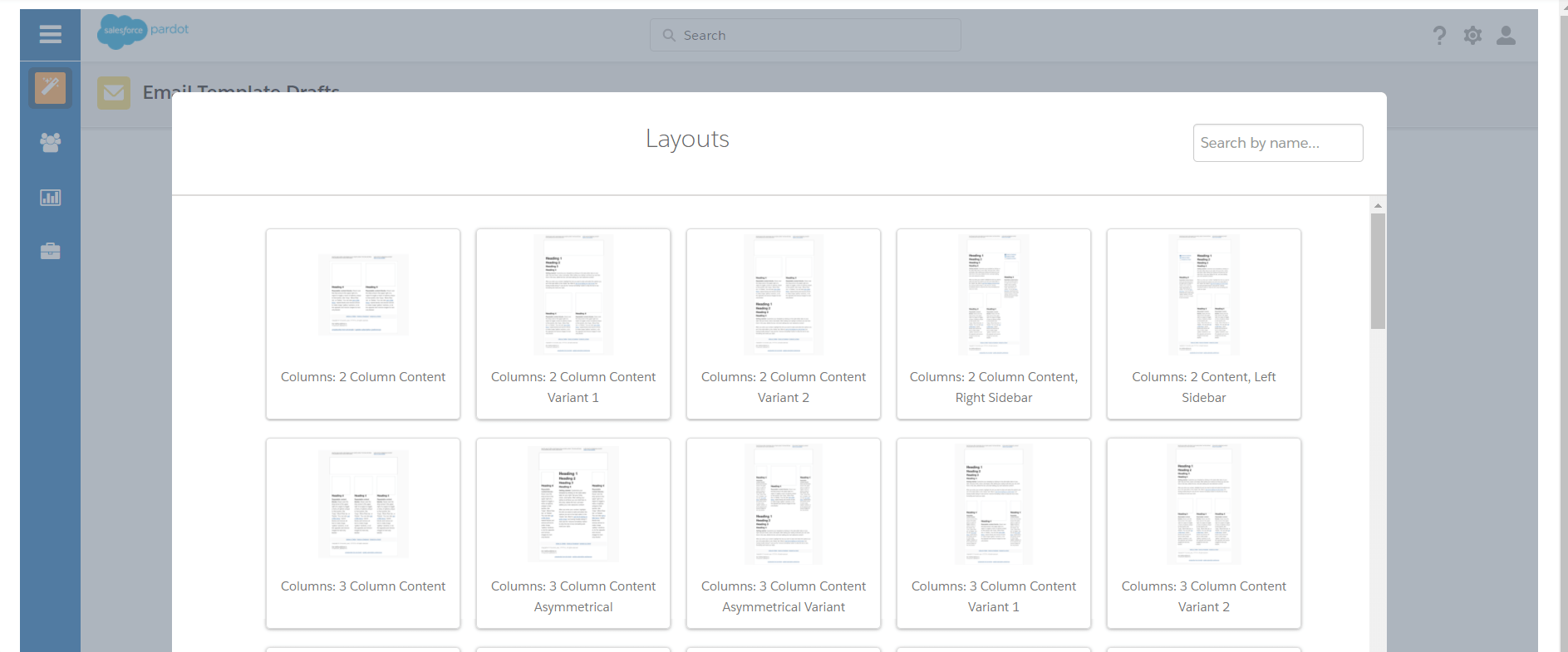
Secondly, you can create an email template using HTML.
Whichever option you choose, you’ll be able to include any type of content, from text and images to animations and videos. In addition to this, it’s simple to incorporate social media buttons, subscribe and unsubscribe options, as well as subscription preferences, in Pardot.
Not only does this give users more options, but it also ensures compliance with relevant data legislation and entices the recipient to act. By including social media buttons in your email templates, for example, you can turn a recipient’s passive experience into an engaging digital journey, as well as boosting your social marketing.
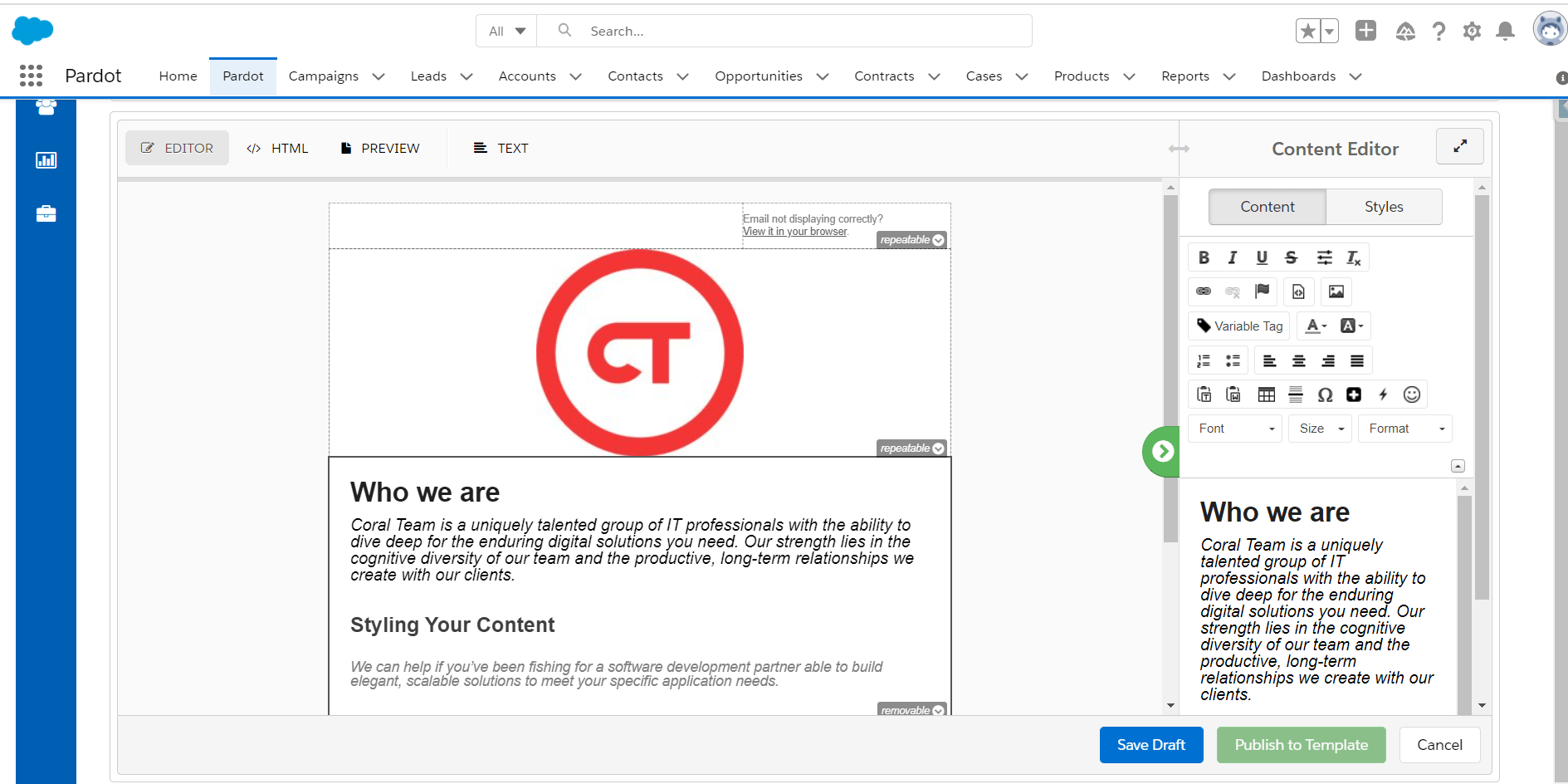
6. Create, Maintain and Update Data Lists
Segmenting your leads and contacts allows you to execute targeted marketing campaigns that are tailored towards a user’s specific needs, objectives and pain points. Not every member of your target audience will have the same goals, motivations or obstacles, which is why it’s important to be able to differentiate between them and provide tailored content for each segment.
Similarly, you may have a longstanding professional relationship with some customers, whereas others may be relatively new. By segmenting your lists, you can ensure that the content and communications users receive prompt engagement and action, thus increasing the efficacy of your campaigns and improving your marketing ROI.
With Pardot, you can create two types of lists: static and dynamic. Static lists are ideal for data that doesn’t require significant updates, as you can amend and modify them manually.
In contrast, dynamic lists routinely check if a prospect meets the required criteria for a segmented list and updates the data accordingly. If a prospect no longer meets the designated criteria, they’ll be removed from the list. Similarly, once a prospect meets the specified requirements, they will be added to the relevant list(s).
Whether you choose to manually update a static list or automate data management using a dynamic list, you can then issue automated commands and deliver tailored content to relevant prospects.
7. Connected Campaigns
To enhance your marketing performance, it’s essential to monitor customer journeys from start to finish. When you implement Pardot, you’ll be able to track a prospect from their first company interaction. This level of activity tracking allows you to streamline customer journeys and reduce the steps between interest, engagement and sales. By shortening the sales funnel and propelling users through it more quickly, you’ll increase your marketing ROI and boost sales.
As soon as a prospective customer clicks on a Pardot tracked link, visits your website or accepts a Pardot tracking code, you’ll be able to monitor their activity, but Pardot’s Connect Campaign feature takes things a step further.
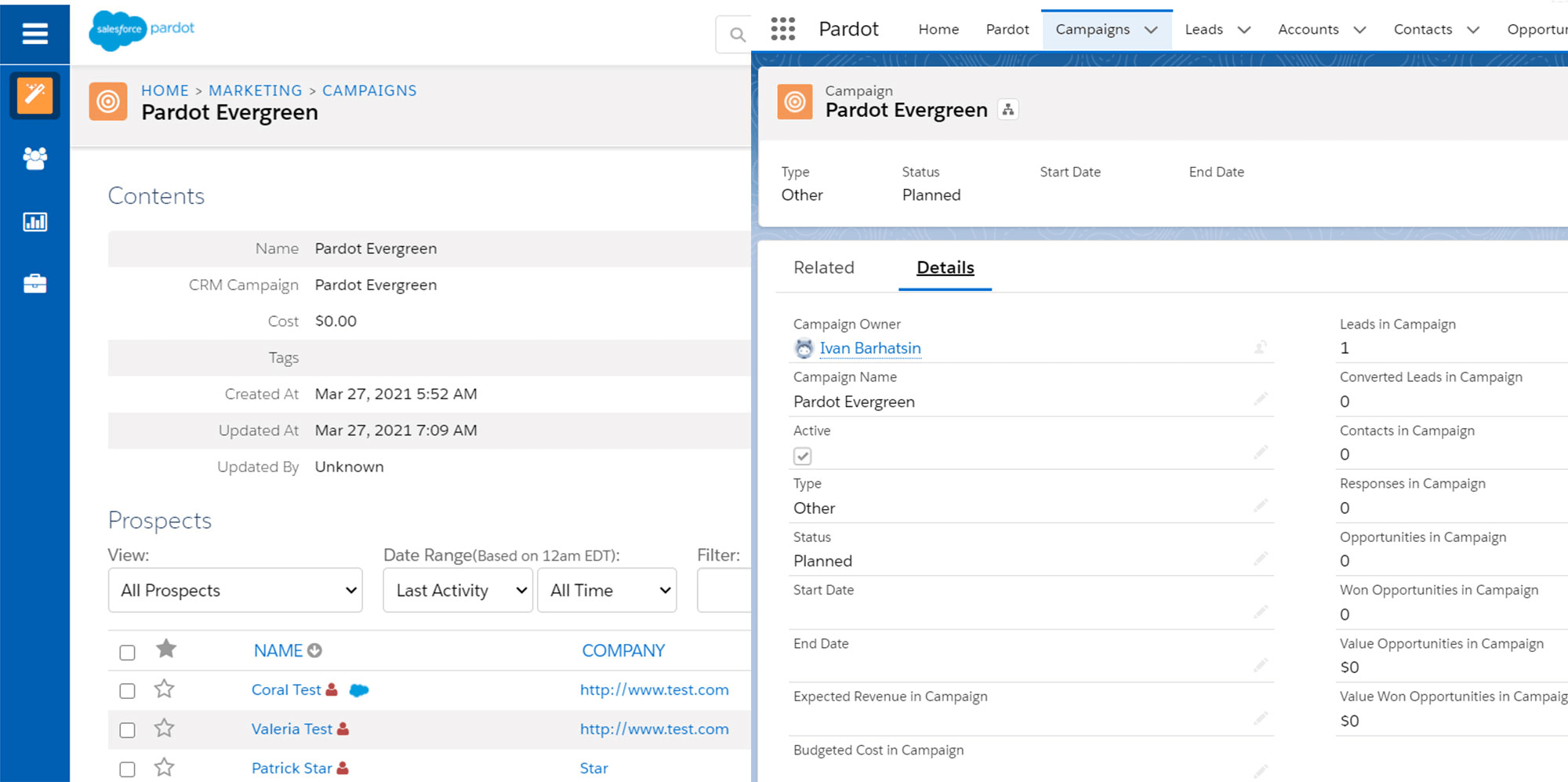
In Pardot Plus and Advanced editions, you’ll gain access to a carefully curated B2B Marketing Analytics platform. With out-of-the-box apps, dashboards and predictive analytics, you can make data-driven decisions at a glance. What’s more – Pardot’s B2B Marketing Analytics allows you to incorporate data from third-party platforms to measure your marketing ROI across a variety of channels.
For Salesforce users, Campaign Influence allows you to see how Salesforce Opportunities are linked to specific campaigns. With a whole host of reporting models to choose from, you can map out the key influences across a range of different models, to achieve increased accuracy in your attribution reports.
When used together, Salesforce and Pardot combine to deliver a powerful analytics platform that ensures you can collate data from a variety of sources automatically and use it to undertake data-driven actions. By linking Opportunities to Campaigns, you’ll see exactly which marketing activities generate the most revenue and be able to enhance subsequent campaigns to deliver even better results.
8. Enhanced Reporting
Accurate reporting is critical to your on-going success. With verified data and meaningful insights, you can identify areas of potential growth and elements of your customer base that are under-represented. This gives you the crucial information you need to acquire more clients, retain your existing customer base and drive your business forward.

However, data is only valuable when it's analyzed and presented in usable formats. In an era of Big Data, being able to generate actionable insights from vast amounts of information is essential and Pardot provides the tools you need to do this.
Email reporting facilitates detailed email tracking with KPIs and key metrics, such as delivery rate, HTML open rate and click to open rate, as well as bounces and opt-outs. Webinar reports keep you up to date with who is attending upcoming webinars, as well as providing insights into their traffic source and user touchpoints throughout their customer journey.
In addition to this, if you’re using both Salesforce and Pardot, the features, such as Connected Campaigns and Engagement History, facilitate the creation of customized reports and enable you to generate the insights that matter most to your business.
9. Marketing Automation
Pardot is designed to facilitate B2B marketing automation, which is why it should be an essential tool for every B2B business. From creating innovative campaigns to executing and monitoring activities, Pardot provides you with the automation tools and flexibility you need to minimize inputs and maximize results.
With three types of distinct Automation Rules, Pardot remains simple to use, no matter how complex your campaigns are. When using Pardot, you’ll be able to create:
Segmentation Rules to group data according to predefined parameters.
Criteria-Based Automation Rules to undertake specific actions when prospects meet designated criteria.
Completion Action Rules to execute a marketing activity every time a specific action is completed, such as sending an email when a prospect signs up to your webinar.
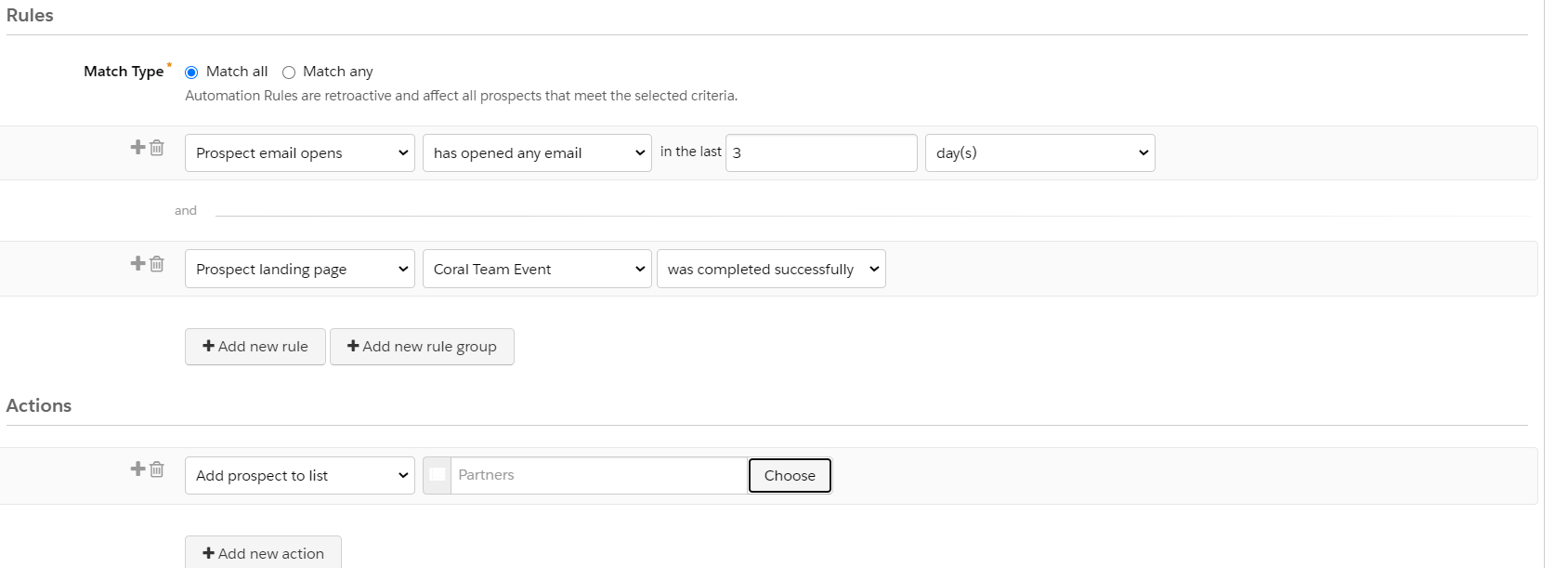
When you combine these three types of rules, it’s easy to see how entire campaigns can be automated. For example, a Completion Action Rule can be used to send a welcome email when a user submits their details via an online form. A Segmentation Rule then adds the prospect to the relevant list(s), depending on whether they open the email and/or click through to your site. Additionally, criteria-based automation rules can be enacted so that prospects will receive content that is most relevant to them, within the segmented list they’re part of.
Marketing automation doesn’t just save you time; it improves the accuracy of your campaigns and ensures that the right content gets to the right prospects at the right time. When you’re competing in a crowded marketplace, losing a prospect can come down to the timing of an email or the relevance of a blog post, which is why accuracy, timing and segmentation are so important.
As well as automating your marketing activities and reporting, you can use Pardot to enhance your SEO too. Automated keyword monitoring, as well as competitor analysis and monitoring, ensures you can target the most cost-effective keywords and implement effective strategies to outperform your competition. By doing so, you’ll increase your rankings on major search engines, like Google and Bing, and, in turn, generate more organic website traffic.
When you automate your marketing and SEO activity, you have the potential to enhance every aspect of your online campaigns and increase your ROI in the process.
10. Prospect Scoring
When numerous prospects are at different stages of the sales funnel, it can be difficult – or impossible – to keep track of them manually and act on the data in a timely manner. As a result, you could inadvertently overlook a valuable prospect, only to waste resources on a lukewarm lead. Not only does this unnecessarily inflate your costs, but it also results in missed opportunities and lost sales.
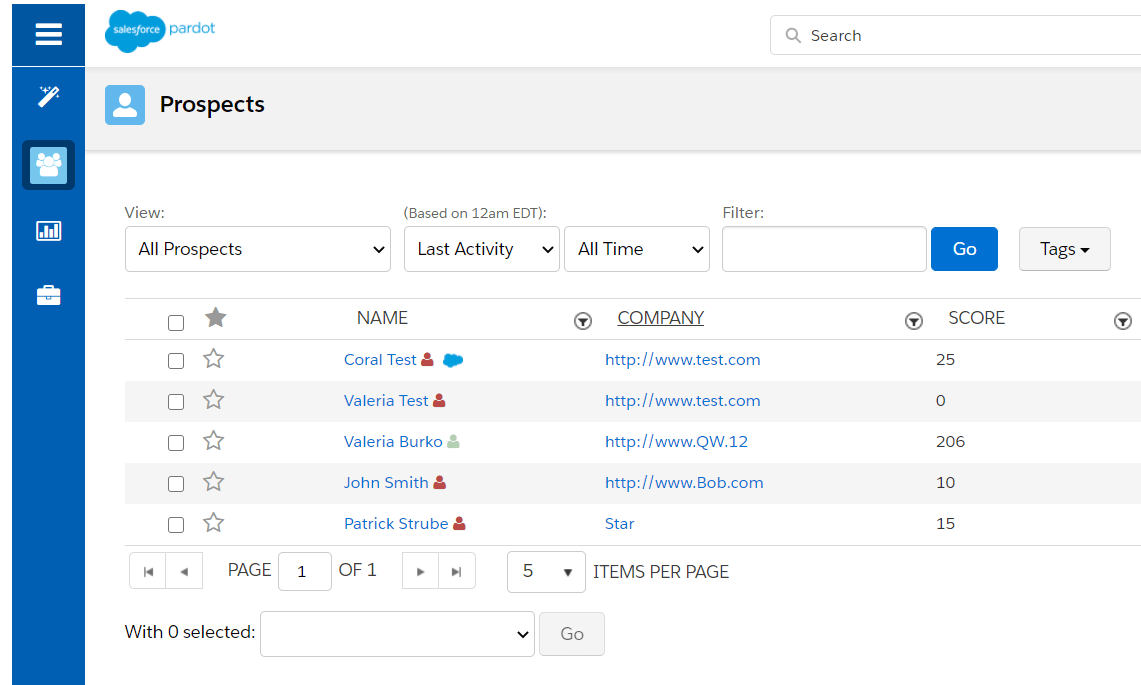
Pardot prevents this from happening by assigning a score to every prospect. Every time an action is completed, such as opening an email, clicking a link, viewing a page or registering for an event, a prospect’s score automatically increases.
This enables you to see the value of a particular prospect at any time and monitor their brand interactions at a glance. When you want to know which prospects are closest to converting and where to focus your resources, Pardot scoring gives you quick access to the data you need.
Implement Pardot with Coral Team
With so many features and benefits, it’s not surprising that Pardot is the go-to automated marketing solution for B2B organizations. If you want to streamline your marketing activities, generate more sales, boost your SEO rankings and transform your ROI, we can help.
At Coral Team, we’re committed to providing the digital solutions you need to grow your business. With our Pardot implementation and setup service, you can incorporate B2B marketing automation into your processes swiftly and seamlessly. Whether you want to integrate Pardot with Salesforce or use it as a standalone platform, we’ll ensure it’s customized to your needs and ready to use.
To find out more, contact us to implement Pardot today.